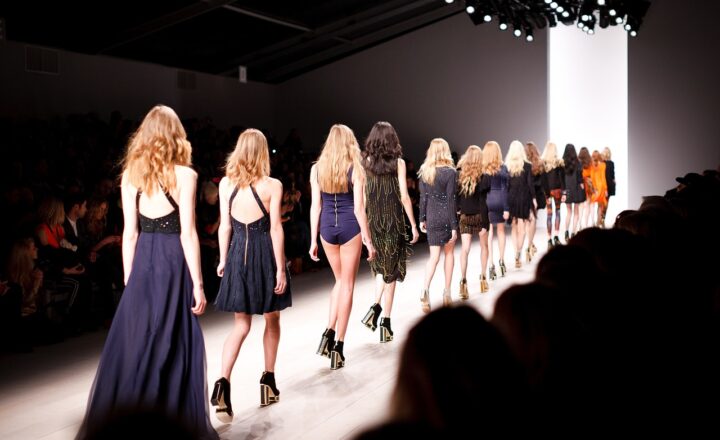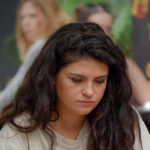Fashion Trends of the 70s – 2020s: A Colorful Journey Through Style
November 19, 2024

Fashion is a reflection of society, a narrative woven into the cultural fabric of time. This article embarks on a colorful journey through the dynamic and ever-evolving landscape of fashion trends from the 1970s to the 2020s. Each decade not only showcases distinctive styles but also encapsulates the social, political, and cultural influences that shaped those trends. Join us as we explore the vibrant tapestry of fashion across five decades.
1. The 1970s: Disco Fever and Bohemian Chic
The 1970s were defined by a rebellious spirit and a newfound sense of freedom. From the disco ball’s shimmering reflections in nightclubs to the bohemian vibes of free-spirited individuals, the decade was a clash of styles. Iconic figures like Bianca Jagger and Farrah Fawcett epitomized this colorful era.
**Key Trends:**
- Bell-Bottoms: This classic silhouette became a symbol of the decade, pairing well with colorful peasant shirts and flowing fabrics.
- Maxi Dresses: These ankle-length dresses in bold prints and vibrant colors captured the essence of bohemian style.
- Platform Shoes: Elevating height and style, platform shoes became a staple for both men and women, often worn to dance the nights away.
The 1970s also saw the rise of gender-fluid fashion, with androgynous looks gaining popularity. Designers like Yves Saint Laurent introduced the concept of women in tuxedos, challenging traditional gender norms.
2. The 1980s: Bold Colors and Excess
The 1980s brought a sense of extravagance into fashion, characterized by daring styles, bold colors, and statement pieces. With the rise of MTV, fashion and music merged like never before. Icons like Madonna and Prince influenced the youth to embrace boldness and self-expression.
**Key Trends:**
- Power Suits: Women’s liberation led to the adoption of power suits, often styled with shoulder pads to project authority.
- Neon Colors: Bright neon shades defined the decade, creating a vibrant palette in both casual wear and athletic outfits.
- Leg Warmers and Spandex: The fitness craze popularized athletic wear, making spandex and leg warmers fashionable outside the gym.
Fashion in the 1980s was all about making statements. From oversized accessories to flashy makeup, everything was designed to grab attention. Trends like the punk movement created a counterculture, emphasizing individuality and rebellion.
3. The 1990s: Grunge and Minimalism
The 1990s presented a contrasting narrative in fashion, oscillating between the grunge aesthetic and a resurgence of minimalism. Influencers like Kurt Cobain and models such as Kate Moss defined the style of this transformative decade.
**Key Trends:**
- Grunge Style: Characterized by ripped jeans, flannel shirts, and combat boots, this style reflected a disaffected youth culture and the angst of the decade.
- Minimalist Chic: The rise of designers like Calvin Klein led to the popularity of clean lines, neutral colors, and understated elegance.
- Choker Necklaces: This accessory became a must-have for both women and men, marking a shift towards self-expression in everyday wear.
The 90s were marked by a diverse range of styles, emphasizing comfort alongside cutting-edge creativity. Fashion became more accessible, bridging gaps between street style and high fashion.
4. The 2000s: Eclectic and Experimental
The 2000s were a vibrant blend of eclectic influences. Digital technology began to permeate fashion, with social media changing how trends circulated. This era embraced individualism, with an emphasis on mixing and matching styles from various cultures and decades.
**Key Trends:**
- Low-rise Jeans: These were emblematic of the decade, often paired with crop tops or camisoles, creating a casual yet striking look.
- Logo Mania: Brands began to prominently display their logos on clothing, creating a wave of streetwear culture.
- Layering: The art of layering became popular, with combinations of textures, colors, and patterns defining personal style.
As the decade progressed, fashion became more about personal identity, leading many to take stylistic risks. The mixing of high fashion with thrift store finds became a common trend, demonstrating a break from conventional fashion rules.
5. The 2010s: Sustainable Fashion and Gender Fluidity
Entering the 2010s, the world witnessed a seismic shift in fashion toward sustainability and inclusivity. The rise of eco-conscious brands and advocacy against fast fashion redefined consumer habits and brand expectations. This decade amplified discussions of gender fluidity within fashion, breaking barriers in clothing design and marketing.
**Key Trends:**
- Streetwear: A blend of high fashion and urban style, streetwear emerged as a dominant trend, spotlighting young designers and inclusive brands.
- Vintage and Thrift Fashion: The appreciation for vintage pieces exploded, with thrift shopping becoming a mainstay in the fashion conversation.
- Gender-Neutral Clothing: Many designers began to create unisex lines, emphasizing inclusivity and freedom of expression in fashion choices.
The decade also saw the #MeToo movement influencing fashion by promoting diversity and awareness within the fashion industry and beyond, challenging the status quo.
6. The 2020s: The Now and What Lies Ahead
As we navigate through the 2020s, fashion remains in a state of flux, marked by the intersection of technology, sustainability, and personal expression. The pandemic shifted priorities, prompting a greater focus on comfort and versatility in clothing.
**Key Trends:**
- Athleisure: The lines between athletic and leisure wear blurred, cementing athleisure as a staple in everyday attire.
- Sustainability Focus: Consumers are increasingly gravitating towards sustainable brands, driving more companies to adhere to ethical practices and sustainable materials.
- Tech-Integrative Fashion: Wearable technology and smart clothing are beginning to emerge, integrating functionality with style to meet modern needs.
The trajectory of fashion in the 2020s will likely continue to emphasize individuality, technological integration, and sustainability, carving a new path for future expressions of style.
Conclusion: The Evolution of Style as a Reflection of Culture
Fashion from the 1970s to the 2020s illustrates not just aesthetics but also the importance of culture, identity, and self-expression. Each decade has contributed unique elements to the global fashion narrative, leading to a landscape rich with diversity. As we move forward, the trends we adopt will continue to tell our stories, shaping our identities and reflecting our ever-evolving world. Fashion will remain a powerful tool for expressing individuality, culture, and consciousness in all its forms.
Whether we lean towards the nostalgia of past trends or embrace the innovative, fashion will always be a colorful journey through time.






